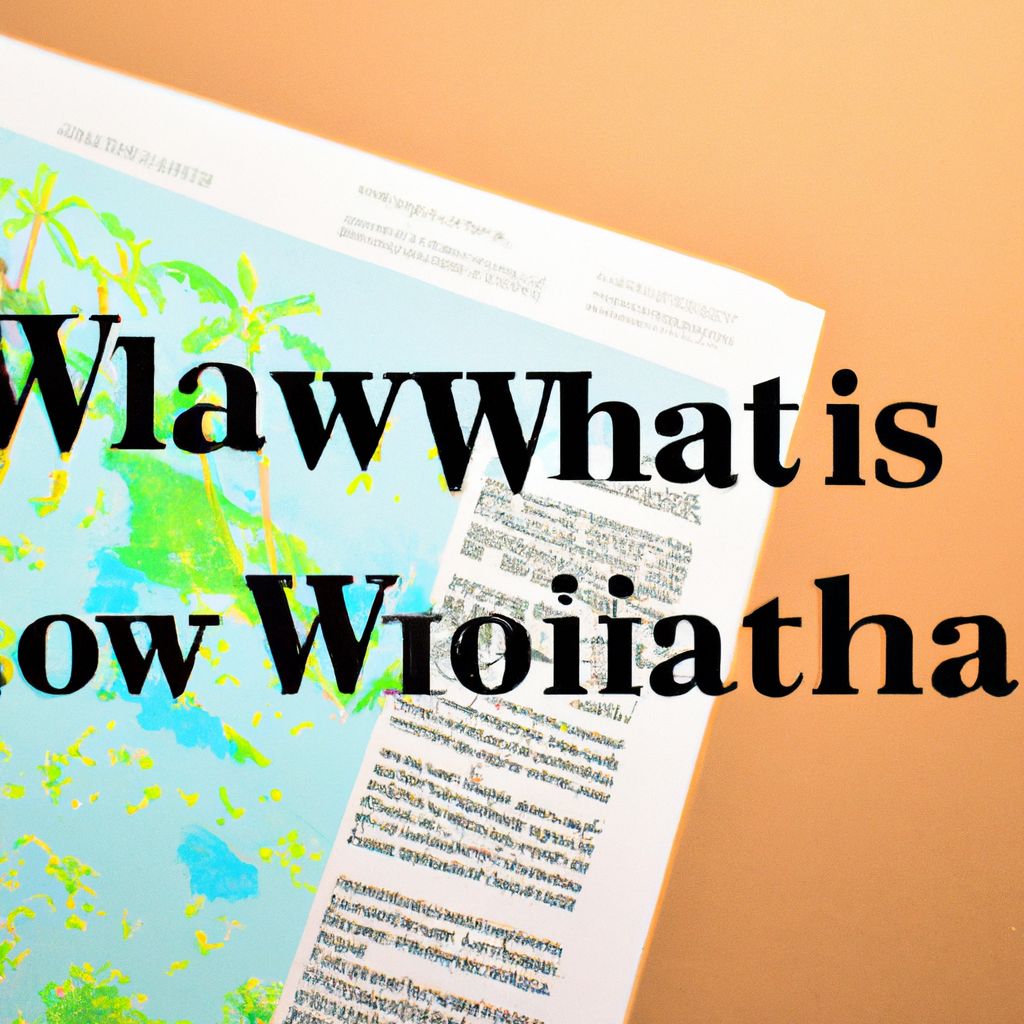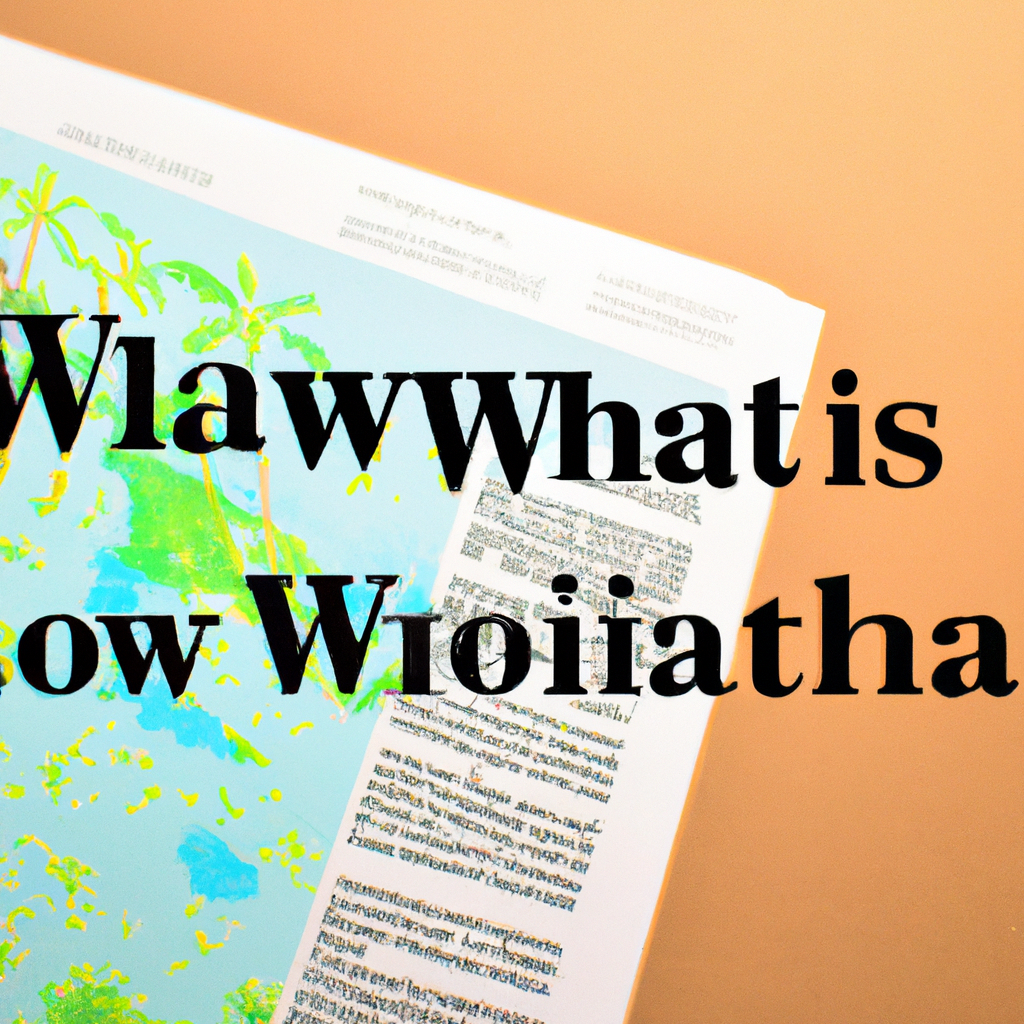Imagine exploring the sun-kissed beaches and vibrant culture of Hawaii, and suddenly realizing that this tropical paradise wasn’t always a state of the United States. The Annexation of Hawaii: How Hawaii Became the 50th US State is a captivating journey through history, delving into the fascinating story of how this majestic archipelago transformed from a sovereign kingdom into a cherished part of the US. From its rich Polynesian roots to the dramatic events surrounding its annexation, this article will transport you back in time to uncover the incredible story behind Hawaii’s journey to statehood. So grab a lei and prepare to be enchanted by the captivating tale of Hawaii.

The Early History of Hawaii
The Polynesian Settlement of Hawaii
The history of Hawaii dates back to the Polynesian settlement of the islands, believed to have taken place around 1500 years ago. Polynesians, the skilled navigators and seafarers, traveled across the vast Pacific Ocean to discover and settle the Hawaiian Islands. These early settlers brought with them their rich culture, traditions, and language, shaping the unique Hawaiian society.
Kingdom of Hawaii
The Kingdom of Hawaii was established in 1795 when the islands were unified under the rule of King Kamehameha I. The kingdom flourished in the early 19th century, with trade partnerships established with various nations, including Britain and the United States. This era marked the emergence of a distinct Hawaiian identity and the development of a monarchy that would shape the future of Hawaii.
Cultural Interactions with the West
The arrival of Western explorers and traders in the late 18th century brought about significant cultural interactions with the indigenous Hawaiian people. European and American influences began to shape the Hawaiian society, introducing new technologies, religions, and practices. This cultural exchange had both positive and negative impacts, as it led to a greater integration with the Western world while also threatening the traditional Hawaiian way of life.
The Arrival of the Europeans
Captain James Cook’s Exploration of Hawaii
Captain James Cook, a British explorer, played a pivotal role in the exploration and mapping of the Hawaiian Islands. In 1778, Cook made his first contact with the Hawaiians, leaving a lasting impact on the islands. His voyages opened the door to further European contact and increased interest in Hawaii, setting the stage for future interactions and eventual colonization.
Impact of European Contact on Hawaiian Society
The arrival of European explorers and traders had a profound effect on Hawaiian society. The introduction of diseases, such as smallpox and measles, devastated the native population, leading to a significant decline in numbers. Additionally, the ongoing cultural exchange led to the emergence of a new class of Hawaiian elite, who embraced Western ideas and customs. This marked the beginning of a series of profound changes that would shape the future of the Hawaiian people.

The Overthrow of the Hawaiian Monarchy
Factors Leading to the Overthrow
Several factors contributed to the overthrow of the Hawaiian monarchy. Economic interests, particularly those of American sugar plantation owners, began to dominate Hawaiian politics. By the late 19th century, a growing wave of American settlers and businessmen exerted increasing influence over the Hawaiian government, seeking to advance their own interests at the expense of the monarchy.
Annexation Clubs and American Influence
Annexation clubs, formed primarily by American residents and businessmen in Hawaii, played a crucial role in advocating for the overthrow of the Hawaiian monarchy and the annexation of the islands by the United States. These clubs wielded significant influence and exercised pressure to ensure their desired outcome. The American government, influenced by these clubs and driven by its own strategic interests, played a key role in shaping the events that ultimately led to the overthrow.
The Annexation Movement
Efforts to Annex Hawaii to the United States
The annexation movement gained momentum in the late 19th century, driven by the economic interests of American businessmen in Hawaii. The sugar industry, in particular, played a significant role in supporting the annexation movement. American politicians, such as Senator John Tyler Morgan, championed the cause in Congress, pushing for the incorporation of Hawaii into the United States.
Deposing the Hawaiian Queen Liliuokalani
In 1893, a group of American and European businessmen backed by the United States military overthrew Queen Liliuokalani, the last reigning monarch of Hawaii. This coup d’etat was orchestrated with the aim of facilitating the annexation of Hawaii by the United States. Despite Queen Liliuokalani’s efforts to resist the overthrow, the power dynamics and overwhelming foreign influence ultimately led to the end of the Hawaiian monarchy.

The McKinley Administration
William McKinley’s Approach to Annexation
After the overthrow of Queen Liliuokalani, President Grover Cleveland expressed his disapproval of the methods used and sought to restore the Hawaiian monarchy. However, it was President William McKinley who oversaw the final annexation of Hawaii. McKinley viewed Hawaii as a strategic asset in the Pacific and believed that the formal annexation was in line with United States’ expansionist policies.
The Newlands Resolution
The Newlands Resolution, passed by the United States Congress in 1898, officially recognized the annexation of Hawaii. This resolution paved the way for Hawaii to become an incorporated territory of the United States, granting American citizenship to the residents of Hawaii and establishing a new chapter in the history of the islands.
Debates and Controversies
Opposition to Annexation
The annexation of Hawaii was met with significant opposition both within Hawaii and across the United States. Critics argued that the overthrow of the Hawaiian monarchy was illegitimate and violated principles of self-determination. Many Hawaii residents, particularly native Hawaiians, opposed annexation and advocated for the restoration of their independent nation.
Racial Motivations
The annexation movement in Hawaii had underlying racial motivations that contributed to the drive for incorporation. Some proponents of annexation believed that Hawaii’s indigenous people were racially inferior and that their assimilation into American society was necessary for progress and civilization. These racially biased perceptions played a role in shaping the policies and attitudes surrounding the annexation of Hawaii.

Annexation Process
Negotiations with the Republic of Hawaii
Following the overthrow of the Hawaiian monarchy, negotiations took place between the United States and the newly formed Republic of Hawaii. These negotiations culminated in the signing of the Treaty of Annexation in 1898. The treaty outlined the terms of annexation and set the stage for further congressional approval.
Approval by the US Congress
The annexation of Hawaii required approval by the United States Congress. After passionate debates, the Newlands Resolution was passed, formalizing Hawaii’s status as a territory of the United States. This decision marked a turning point in Hawaii’s history and set the stage for its eventual path toward statehood.
Hawaii as a US Territory
The Organic Act
In 1900, the United States Congress passed the Organic Act, establishing the framework for governance and administration in the newly formed Territory of Hawaii. The act provided for the appointment of a governor and a legislature, granting limited self-governance to the people of Hawaii while retaining ultimate authority in the federal government.
Governance and Administration
Under territorial status, the governance and administration of Hawaii were largely overseen by appointed officials. The appointed governor had significant powers, and the territorial legislature passed laws and regulations that shaped the daily lives of the Hawaiian residents. While progress was made in economic development and infrastructure, the territorial era also brought challenges as Hawaii grappled with issues of land ownership, labor rights, and cultural preservation.

World War II and Statehood
Attack on Pearl Harbor
On December 7, 1941, the Japanese launched a devastating surprise attack on the United States Pacific Fleet at Pearl Harbor, Hawaii. This event marked a turning point in World War II and thrust Hawaii into the forefront of global conflict. The attack resulted in the deaths of thousands of American military personnel and civilians, and it accelerated the United States’ involvement in the war.
Hawaii’s Role in the War
As the United States entered World War II, Hawaii became a vital strategic base for military operations in the Pacific. The islands served as a crucial staging ground and provided a crucial link between the United States and its forces throughout the Pacific theater. The war fundamentally transformed Hawaii’s economy, society, and demographics, laying the groundwork for its eventual path toward statehood.
Post-War Shift Toward Statehood
The experiences of World War II brought a renewed sense of unity and purpose to the people of Hawaii. The sacrifices made by Hawaii residents during the war years contributed to a growing desire for statehood. In 1959, after several years of lobbying and campaigning, Hawaii became the 50th state of the United States, cementing its place in the American political landscape.
Legacy and Continued Controversy
Hawaiian Sovereignty Movement
The annexation of Hawaii and its subsequent transformation into a state have remained sources of ongoing controversy and debate. The Hawaiian sovereignty movement seeks to address the historical injustices and advocate for the rights of native Hawaiians. These movements strive for greater self-determination, cultural preservation, and the recognition of Hawaii’s indigenous people.
Cultural Revival and Preservation
In recent years, there has been a resurgence of interest in Hawaiian language, culture, and traditional practices. Efforts have been made to revive and preserve indigenous knowledge, arts, and crafts. The revitalization of Hawaiian culture has become an integral part of the identity and pride of many Hawaii residents, fostering a deeper understanding and appreciation of the islands’ rich heritage.
In conclusion, the history of Hawaii is a complex narrative of cultural interactions, political maneuverings, and the legacy of colonialism. From its Polynesian settlement to the overthrow of the monarchy and eventual statehood, Hawaii’s journey to becoming the 50th US state is a testament to the convergence of various forces, both external and internal. As the Hawaiian sovereignty movement gains momentum and efforts are made to preserve and celebrate indigenous culture, Hawaii’s past continues to shape its present and future.
